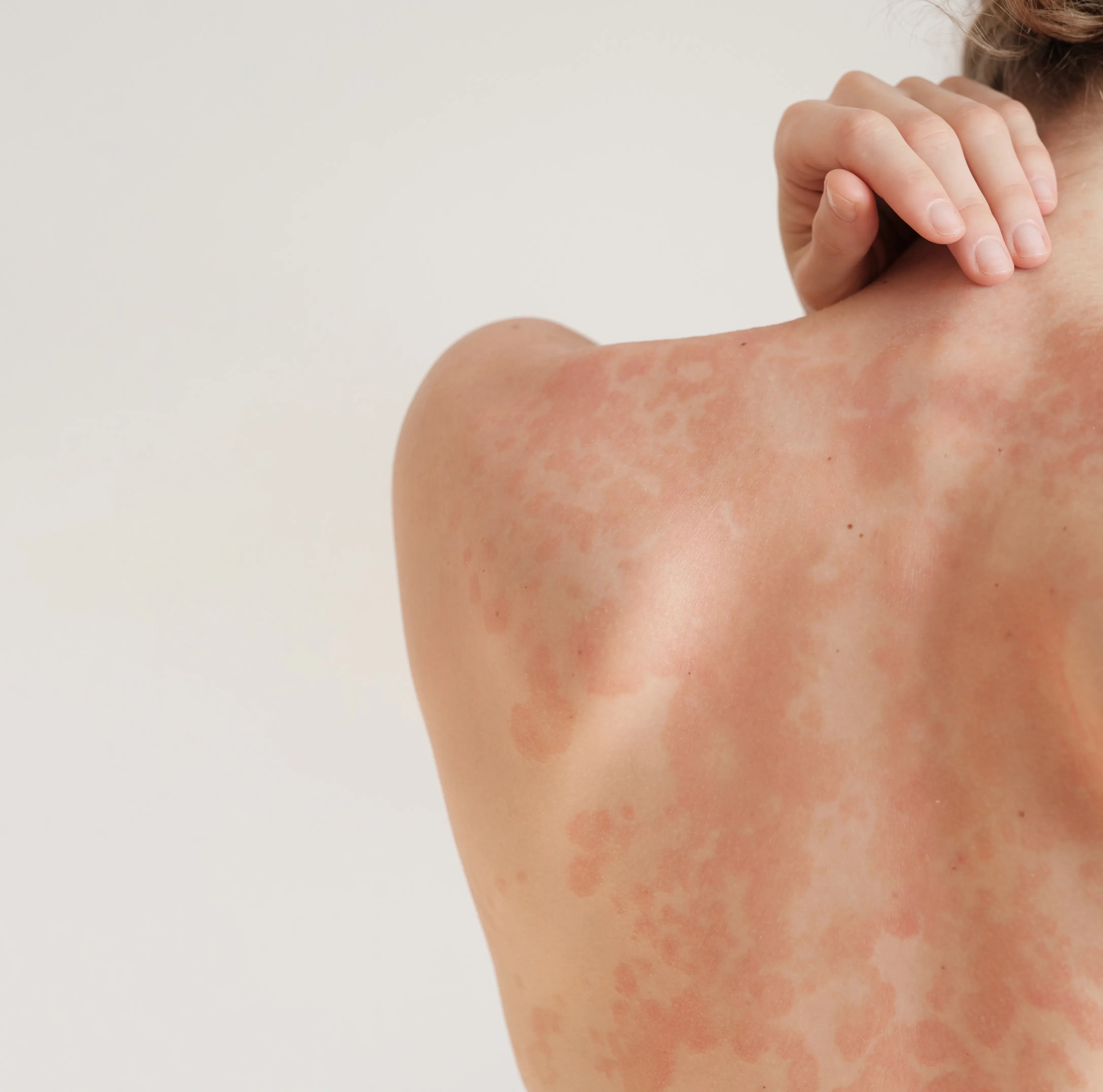Allergens are everywhere. They can be disguised as innocent little plants – like poison ivy – or sweet smelling perfumes. They can be airborne and land on your eyelids. They can come in the form of cigarette smoke or chemical sprays. They can be seasonal with the arrival of pollen or they can be hidden in your home, mattress or carpet as dust mites. All of these things can trigger an allergic response that causes sneezing, eye watering, stuffiness and more.
Skin allergies are sneaky, too. Anything that comes in contact with your skin can trigger a skin reaction that results in a red, itchy rash or even hives. It takes at least 10 days to become sensitive to something that you’ve been in contact with. That can make it very difficult to isolate the cause of the rash. Sometimes it can take years of contact before you have a reaction. After you develop a skin sensitivity, though, you could react within just a few minutes of contact. Some causes of skin allergies include nickel, makeup, lotions, fragrances, shampoos, cleaning products, medications, plants and latex.
To determine what you are allergic to, many allergists or dermatologists use the TRUE test. It consists of a set of small patches that the doctor attaches to your back. Each one has a sample of a possible allergen. After wearing the patches for two days, the doctor will check for reactions. Your doctor may want to do further testing using substances that are unique to you and your work or home environment. If you have a problem with nickel, you can use a dimethylglyoxime to test objects in your life for their nickel content. When you have a skin reaction to an irritant, it is usually a form of contact dermatitis.
When you have a skin reaction, it’s important not to scratch because the afflicted area can become infected. There are several creams and lotions, such as hydrocortisone cream and calamine lotion, which you can use to help with the itching. Home remedies, such as oatmeal baths and cold compresses, can also bring relief. Preventing an attack is the best plan of action, however. Do your best to figure out what is causing your allergic reactions and remove it from your environment.








